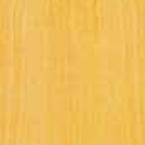| Wood of the Month: Light-Colored Koto Has Wide Range of Uses and Names By Jo-Ann Kaiser |
| FAMILY NAME Pterygota macrocarpa, Pterygota bequaertii of the family Sterculiaceae COMMON NAMES Pterygota, koto, ware, awari, kefe, poroposo, African pterygota, African chestnut HEIGHT/WEIGHT Koto grows to heights of 75 to 100 ft or more. Ware and kefe can reach heights up to 120 ft, with boles clear up to 40 to 80 ft and trunk diameters of 2 to 4 ft. Both species can have heavy buttresses. PROPERTIES
|
African pterygota is the name given to two closely related species, Pterygota bequaertii and Pterygota macrocarpa. The trees grow in Western Africa, primarily in Nigeria and the Cameroon Republic, but also, Liberia, the Ivory Coast and Ghana.
A name used frequently for the two species is koto, though some reference books make the distinction of calling Pterygota bequaertii trees koto and Pterygota macrocarpa trees kefe, ware or poroposo. Other commonly used names for the trees include awari and African chestnut.
By any name, koto is a wood that has a variety of commercial uses, both in veneer and lumber form. It has long been used as a veneer for door skins and as core stock for plywood manufacturing. It is also used for furniture and furniture components, joinery, boxes and crates, pallets and general carpentry. Koto is also used in the production of sporting goods. Its wood surface plies are used in the production of some table tennis blades. ?Koto wood surface plies encourage crisp, fast blocks and hard hitting for sharper ball contact and faster rebound,? says the maker of the high-tech table tennis paddles called The Ninth Wonder, which are priced at $169 per blade. Koto is also used in contemporary table designs from Europe and home d̮?̩̉cor items, such as turned drapery rods.
The wood from these species is distinctive for its very light color. Both the heartwood and sapwood are yellow-to-creamy-white, sometimes with a gray tint. Koto is one of those woods with little delineation between heartwood and sapwood. The wood?s grain can be straight, but some of the material has an interlocked grain. Material from the two species may have small knot clusters. Koto is sold as lumber, rotary cut into corestock and backing veneer for plywood and also sliced for decorative veneer. Some material is quarter sawn, producing an interesting flecked ray figure. Another distinctive feature of the species is that the green wood produces a very unpleasant odor that disappears once the material has been dried.
While the two species are very similar and often lumped together, some reference sources note small differences between them. Weight, for example, varies. The weight of koto is from 33 to 47 pounds per cubic foot, with an average weight of 41 pounds per cubic foot. The average weight for trees from the species Pterygota macrocarpa is 35 pounds per cubic feet when seasoned.
Rick Banas of Interwood Forest Products, Inc., Shelbyville, IN, said his company, a subsidiary of Fritz Kohl Veneer Mill, Germany, carries koto veneer. "It isn't widely used, but what we sell is usually used in paneling," Banas said. "Customers seem to be looking for koto veneer with striping and the lace figure that comes when the material is cut perpendicular to the growth rings. It almost resembles a blonde lacewood."
Drying Guidelines
Drying koto correctly is particularly important for several reasons. Experts recommend a kiln schedule of T10-D4s for 4/4 stock and T8-D3S for 8/4. ?Care is needed to avoid surface checking and extension of original shakes; cupping may also occur, but distortion is usually small,? warn the editors of ?Encyclopedia of Wood.? ?Both species of Pterygota are prone to blue and grey fungal staining so material should be dried as soon as possible.?
Some material is chemically impregnated to discourage staining. Any treated material will need to be stored in dry, well-ventilated rooms, according to the editors of ?Veneers a Fritz Kohl Handbook.?
Poor Steambending
Koto gets good marks for workability with machine and hand tools, though its moderately coarse texture and shallowly interlocked grain can dull cutting surfaces. It is not a wood to select for steam bending, but it glues and nails well. Experts caution to use care when nailing near edges to avoid splitting.
The heartwood is not considered durable and is susceptible to attack by termites, while the sapwood is vulnerable to post beetle attack. The U.S. Department of Agriculture Forest Service publication ?Tropical Timbers of the World? cautions that pterygota species logs ?are prone to stain and insect attack requiring rapid removal from the forest or a chemical treatment.?






Have something to say? Share your thoughts with us in the comments below.